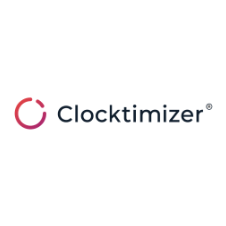Clocktimizer: Can I use data to help me build better budgets?
For the last few blogs, we’ve been discussing the importance of data management. A good data governance policy not only identifies how to collect and store data, but why. Data governance is becoming increasingly important, particularly as the legal profession is becoming increasingly data-driven. Clients are demanding transparency and an end to billing by the hour. To this end, last week we looked at the importance of evaluating your data sources. So, having ensured you are collecting data, and that the data is as accurate as possible, this week we are looking at what you can do with it. And that means budgets. Or more importantly, how to stick to them.
The problem with data-less budgets
Speak to anyone in finance in a law firm and they will tell you about how difficult it is to keep large projects on budget. Write-offs are fairly commonplace, normally as a result of adding up the bill once a matter is closed and realising it seriously outweighs the projected cost. And the reason for it is understandable. We have written before about the challenges project managers face when they have little oversight. It is impossible to work out if you are running on track when there is no centralised way of seeing how many hours have been logged to a matter.
Thankfully, tools like Clocktimizer exist to perform this task. Our platform allows you to build budgets and assign them to a case. Clocktimizer will then automatically track which hours are logged to the matter in real-time. However, the true value of data in this instance, is in the sophistication with which you can keep your budget on track. Here’s just a few ways that Clocktimizer uses different data points to ensure you avoid another write off.
Notify me
The most simple way in which Clocktimizer keeps budgets on track is by issuing budget warnings. Budgets can be made detailed, by dividing them up into phases and tasks, or kept simple by just choosing which activities are in scope. You can then set financial limits for each of these tasks or phases. Setting up automated alerts at 50%, 75% or 100% (or even a bespoke limit of your choice) ensures that no one activity or phase breaks the budget.
While we can’t avoid unforeseen work, Clocktimizer provides sufficient notice to open up a conversation with a client before you deliver a bill. It is considerably better discussing how to progress with a client before you have incurred the costs. It offers a more collaborative approach, and gives the client the option to choose how to proceed.
Out of scope, out of mind
Having ensured that the in-scope work stays within budget limits, it is important to ensure out of scope work is kept in check. To achieve this, Clocktimizer has developed a number of different alert types. Within each budget, it is possible to specify the following types of work as out of scope:
A specific timekeeper. For those instances when you want to ensure that only your team logs hours to a matter
A seniority level. Don’t want Senior Partners logging any more hours under due diligence? With Clocktimizer you can specify this as out of scope
An activity. If you have built a bespoke fee arrangement with a client, which specifically excludes certain activities, you can add this to your budget structure
For each of these examples, you can add out of scope work to a budget and be notified in real-time if said work is logged to your matter. Rather than finding out weeks later, when the work has started to add up.



